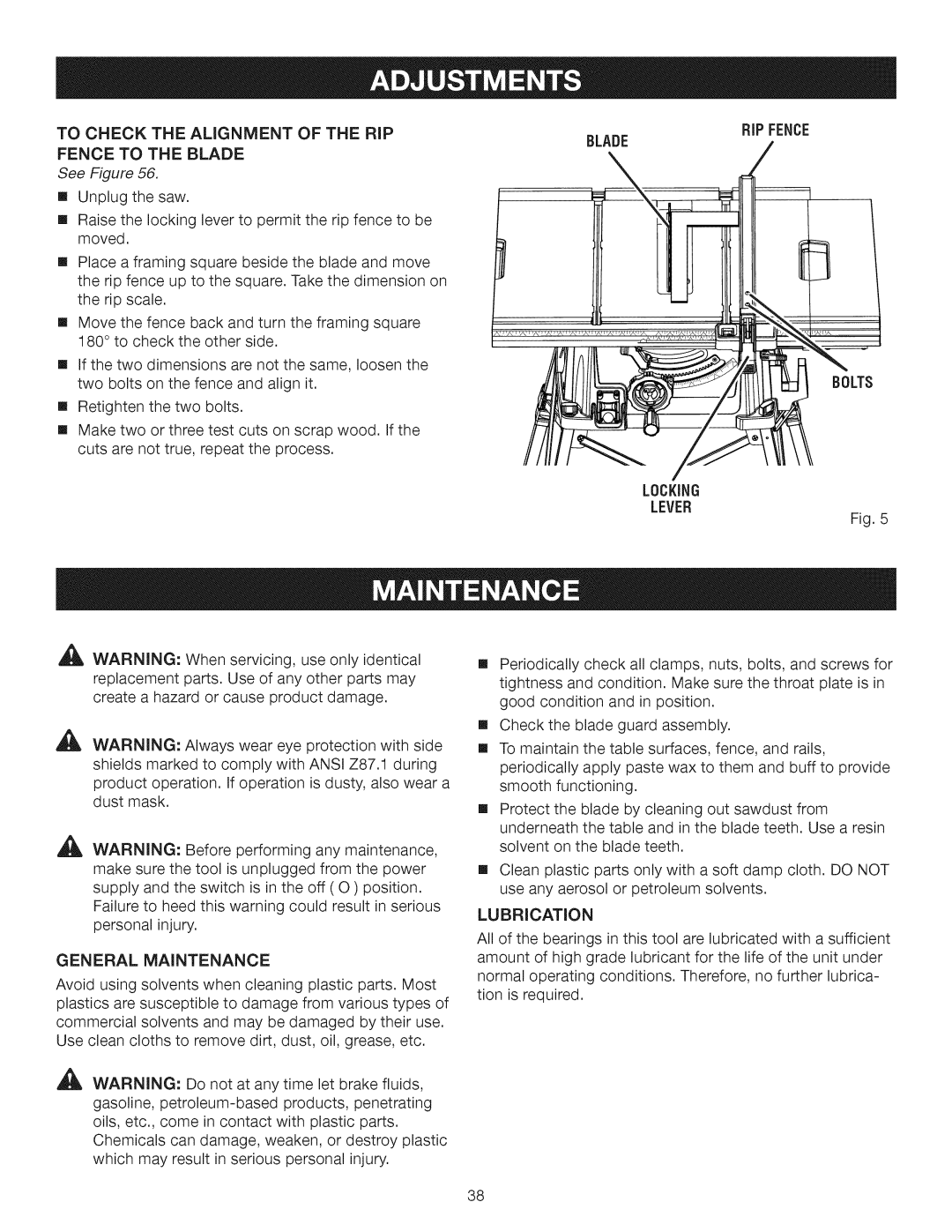
TO CHECK THE | ALIGNMENT OF THE RIP | RiP FENCE |
FENCE TO THE | BLADE | BLADE |
| ||
See Figure 56. |
|
|
[] Unplug the saw.
[] Raise the locking lever to permit the rip fence to be moved.
[] Place a framing square beside the blade and move the rip fence up to the square. Take the dimension on the rip scale.
[] Move the fence back and turn the framing square 180 ° to check the other side.
[] | If the two | dimensions are not the same, | loosen the |
| two bolts | on the fence and align it. | BOLTS |
[] | Retighten | the two bolts. |
|
[] Make two or three test cuts on scrap wood. If the cuts are not true, repeat the process.
LOCKING
LEVER
Fig. 5
A WARNING: When servicing, use only identical replacement parts. Use of any other parts may create a hazard or cause product damage.
A WARNING: Always wear eye protection with side shields marked to comply with ANSI Z87.1 during product operation. If operation is dusty, also wear a dust mask.
A WARNING: Before performing any maintenance, make sure the tool is unplugged from the power supply and the switch is in the off ( O ) position. Failure to heed this warning could result in serious personal injury.
GENERAL MAINTENANCE
Avoid using solvents when cleaning plastic parts. Most plastics are susceptible to damage from various types of commercial solvents and may be damaged by their use. Use clean cloths to remove dirt, dust, oil, grease, etc.
A WARNING: Do not at any time let brake fluids, gasoline,
Chemicals can damage, weaken, or destroy plastic which may result in serious personal injury.
[] Periodically check all clamps, nuts, bolts, and screws for tightness and condition. Make sure the throat plate is in good condition and in position.
[] Check the blade guard assembly.
[] To maintain the table surfaces, fence, and rails, periodically apply paste wax to them and buff to provide smooth functioning.
[] Protect the blade by cleaning out sawdust from underneath the table and in the blade teeth. Use a resin
solvent on the blade teeth.
[] Clean plastic parts only with a soft damp cloth. DO NOT use any aerosol or petroleum solvents.
LUBRICATION
All of the bearings in this tool are lubricated with a sufficient amount of high grade lubricant for the life of the unit under normal operating conditions. Therefore, no further lubrica- tion is required.
38
